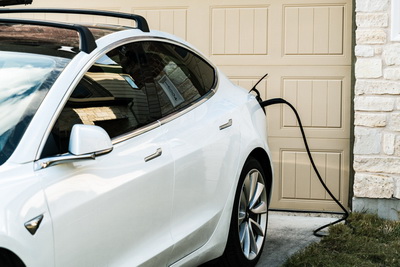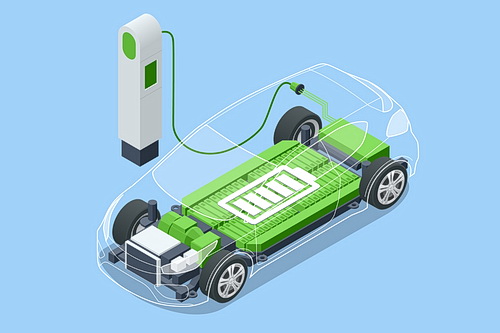
It’s Not Beach Time Toto
Electric cars are gaining popularity, but in general, the change from gas to electric vehicles seems to be slower than expected and in this last quarter, Telsa sales dropped. Costs of EVs seem to be the top concern, followed by the low mileage battery usage before you have to charge it again, but that has not stopped people from buying them, and if you do have an electric car or are planning on getting one, know this – your EV battery will decline by about 20% – 30% in wintertime.
So if you’re just starting out for your morning commute to your job which is, say 18 miles away, and your battery is fully charged to 230 miles (which is the average full charge for a standard electric vehicle battery), expect the capacity to diminish a lot more during the winter months. The bottom line is that the colder the weather, the more miles that would be lost driving the same distance compared to warmer weather.
The culprit is lithium, which is the type of battery that is used in EVs. Let’s take a look at why lithium batteries are affected by changes in the weather.
Causes of EV Battery’s Declination in Cold Weather
- Ion Atoms: Cold weather reduces the chemical activity of the lithium ions. Ions are atoms that have either gained or lost electrons, allowing them the ability to bond with other atoms. This is a normal process in battery charging, but when cold weather comes, the amount of ions decreases at a faster rate than in summer, thereby reducing the charging process. In other words, the battery doesn’t store as much energy as it would normally do when in warmer weather.
- Viscosity: You may be familiar with this term as it is mentioned a lot when referring to car oil, but in this case, we are referring to the lithium battery. Cold weather increases the thickness of the electrolyte and this is known as viscosity. The thicker the electrolyte, the harder it is for the ions to move around, which reduces the battery’s energy, e.g. its ability to deliver power.
- Plating: Over repeated charge and discharge cycles, some of the ions can stick onto the surface of the anode, which is a positively charged atom. Consequently, this forms a solid layer of lithium metal. This phenomenon is known as “lithium plating,” and it can reduce the capacity of the battery and could potentially lead to short circuits. Lithium plating occurs more often at low temperatures or when the battery is charged or discharged too quickly.
At temperatures fall below freezing, some lithium batteries can lose up to 50% of their juice.

What Can I Do to Compensate for This Loss of Energy?
- If you have a garage, use it. Even if the garage is not heated, it would still be a bit warmer than if the car was in your driveway or on the street, especially if it is surrounded by snow and ice.
- Charge your batteries regularly. This will help to prevent them from discharging too deeply.
- Avoid fast charging. Fast charging can generate heat, which can damage the battery and reduce its capacity. That doesn’t mean that you shouldn’t use a fast EV charger, but be cognitive about how often you use one. Maybe in the future, as this technology advances, this won’t be as much of a problem as it is now.
Summary
Lithium batteries, whether in a car or any device diminish in capacity when in winter time. This is because of the decrease in ion capabilities when in cold weather. There are however several things you can do to circumvent this decrease, but they are not 100% reliable after you take the vehicle out for a drive.
Best bet would be to move to a warm climate. Then you will never have this problem 😀.
Patricia Scanlon is a traffic ticket attorney who services clientele in Long Island, NYC, and throughout NYS.